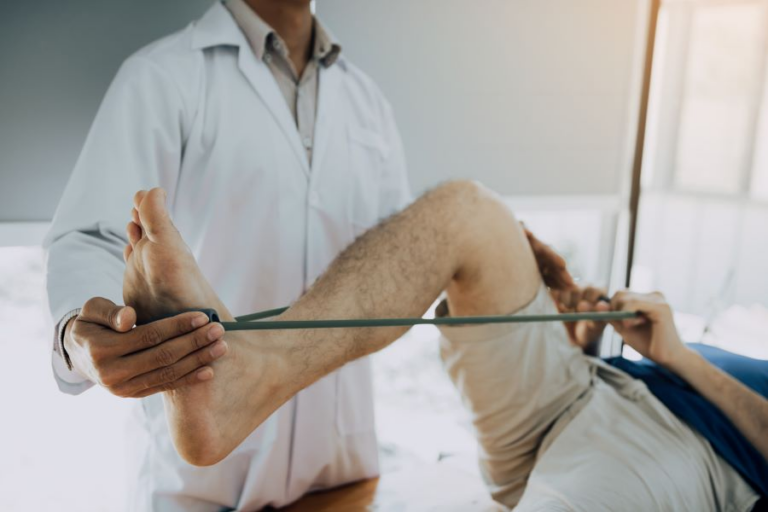
Dealing with Lyme disease is challenging, especially when the resultant joint pain makes simple chores increasingly complex.
However, there is some relief: physical therapy for Lyme provides an opportunity to reduce the pain and increase mobility.
This blog will delve deeper into how physical therapy can assist with joint pain that arises from Lyme disease.
What Does Physical Therapy for Lyme-Induced Joint Pain Do?
The primary aim of physical therapy is to enhance the quality of movement and comfort in the joints.
- Treatment of pain, muscle atrophy, and joint stiffness encompasses exercises and procedures personalized for the patient.
- To treat patients’ varied concerns, therapists customize their approach. For example, most therapists will provide gentle exercises like stretching, which increases range of motion and strengthens muscles.
- Fighting pain becomes easier, making it possible for patients to complete everyday tasks. Gradually, therapy allows for improved mobility and increased self esteem.
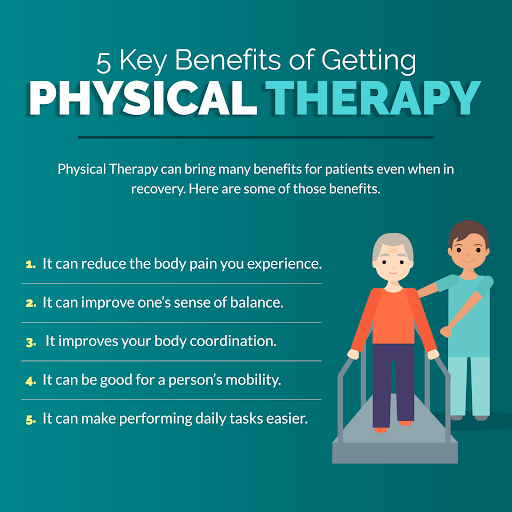
How Does Physical Therapy for Lyme Improve Movement?
- Physical therapy improves movement by loosening up the stiff joints and carrying out the daily tasks. Therapist carefully guides you with exercises that are personalized for you to reduce pain, make your joints loosen up and stretch tight muscles.
- For example, you might work on gentle stretches to improve flexibility or use low-impact activities like swimming or cycling to strengthen your muscles without putting pressure on your joints.
- Your therapist may use joint mobilization, a hands-on technique to help your joints move better. These small but consistent efforts can make a big difference in how you feel day to day.
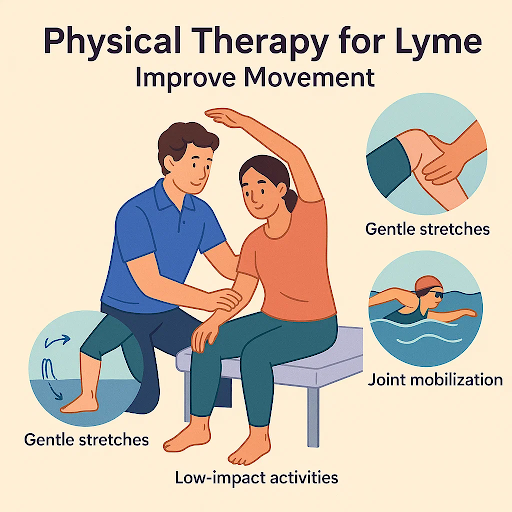
What Exercises Help With Joint Pain Relief from Lyme?
- Gentle, low-impact exercises are the best way to ease joint pain from Lyme. Gentle exercises like yoga, walking, and even swimming can help you feel better.
- Yoga is a great way to improve your balance, on the other hand swimming gives you a full-body workout without straining your joints. Walking, even for a few minutes, improves blood flow and keeps your joints active.
- Resistance bands, or other strength-building exercises, focus on making the muscles around your joints stronger so they can give more support. A mix of these exercises, tailored to your needs, can help you move more freely and with less pain.
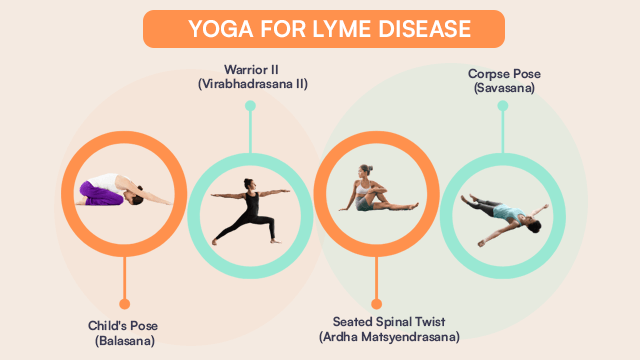
Why Start Rehabilitation for Lyme Disease Early?
- Starting therapy early is one of the best ways to prevent long-term joint problems from Lyme disease. The sooner you address joint pain and stiffness, the better your chances of recovering fully.
- When therapy is delayed, joint damage can become worse, leading to more pain and less mobility. Early physical therapy stops this from happening by reducing inflammation, improving flexibility, and strengthening muscles right away.
It also helps you avoid unhealthy positional patterns and stay active.
How Long Does Physical Therapy for Lyme Take to Work?
- Most people start to feel better within 4–6 weeks of regular physical therapy. How quickly you improve depends on how severe your joint pain is and how consistent you are with therapy.
- Your therapist will track your progress and adjust your plan as needed. While some improvements come quickly, full recovery may take several months, especially if your symptoms have been around for a while.
- The key is sticking with it—every session brings you closer to feeling better.
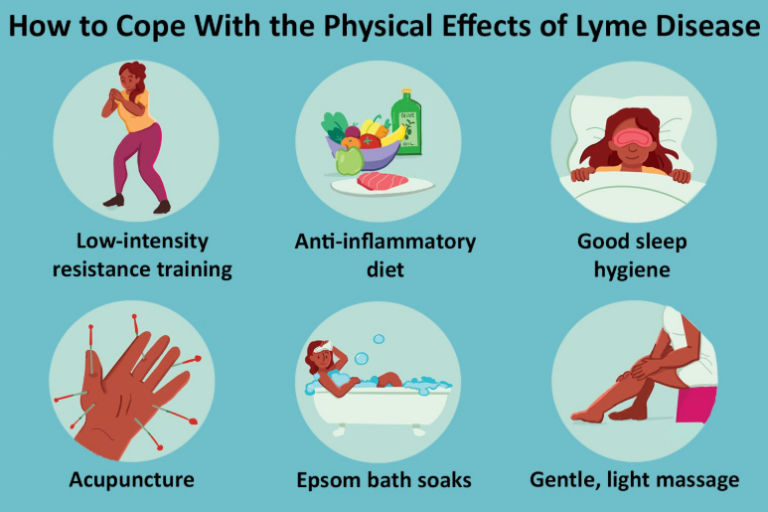
Wrapping It Up
- Living with Lyme-induced joint pain is challenging, but you don’t have to go through it alone. With the right physical therapy for the Lyme, you can ease your pain, regain your strength, and get back to the things you enjoy.
- Combining physical therapy with healthy habits, like eating healthy nutritious food and staying active, for the best results.
- If you’re ready to take that first step, reach out to a physical therapist today—they’re here to help you feel better and move forward.
References
- Dr. Will Cole. 11 effective home remedies for Lyme disease. drwillcole.com. 11 Effective Home Remedies For Lyme Disease.
- Van Hal M, Dydyk AM, Green MS. Acupuncture. [Updated 2023 July 24]. In: StatPearls [Internet]. Treasure Island (FL): StatPearls Publishing; 2025 Jan-. Available from: https://www.ncbi.nlm.nih.gov/books/NBK532287/
- King R. 5 Strategies for Coping with Chronic Illness | Frequencell Inc. [Internet]. Frequencell Inc. 2023. Available from: https://vitalfield.com/coping-with-chronic-illness/







